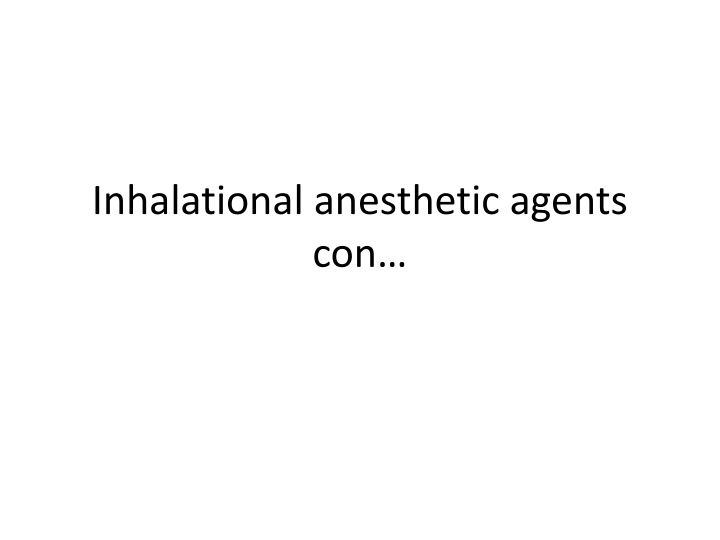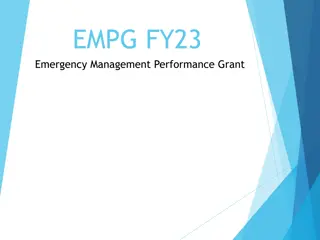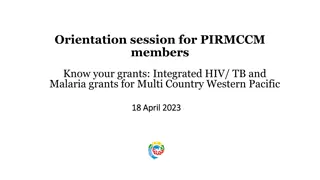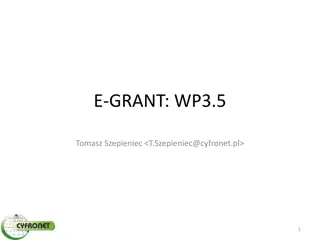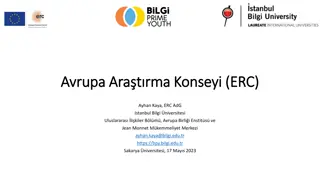How to Facilitate Global Grant Projects
Discover the steps and strategies involved in making a Global Grant a reality, from defining and designing your project to joining existing initiatives, along with valuable tips to begin the process effectively and meet team expectations.
Download Presentation

Please find below an Image/Link to download the presentation.
The content on the website is provided AS IS for your information and personal use only. It may not be sold, licensed, or shared on other websites without obtaining consent from the author.If you encounter any issues during the download, it is possible that the publisher has removed the file from their server.
You are allowed to download the files provided on this website for personal or commercial use, subject to the condition that they are used lawfully. All files are the property of their respective owners.
The content on the website is provided AS IS for your information and personal use only. It may not be sold, licensed, or shared on other websites without obtaining consent from the author.
E N D
Presentation Transcript
Isoflurane Isoflurane is a colorless liquid, nonflammable volatile anesthetic with a pungent ethereal odor.
Effects on organ systems a. Isoflurane causes minimal left ventricular depression. Cardiac output is maintained by a rise in heart rate due to partial preservation of carotid baro- reflexes. Mild adrenergic stimulation increases skeletal muscle blood flow, decreases systemic vascular resistance, and lowers arterial blood pressure. Rapid increases in isoflurane concentration lead to transient increases in heart rate, arterial blood pressure, and plasma levels of norepinephrine. Isoflurane dilates coronary arteries, but not nearly as potently as nitroglycerin or adenosine. Dilation of normal coronary arteries could theoretically divert blood away from fixed stenotic lesions, which was the basis for concern about coronary steal with this agent, a concern that largely been forgotten. Cardiovascular:
Con b. Respiratory: Respiratory depression during isoflurane anesthesia resembles that of other volatile anesthetics, except that tachypnea is less pronounced. The net effect is a more pronounced fall in minute ventilation. Even low levels of isoflurane (0.1 MAC) blunt the normal ventilatory response to hypoxia and hypercapnia. Despite a tendency to irritate upper airway reflexes, isoflurane is considered a good bronchodilator, but may not be as potent a bronchodilator as halothane.
Con c. At concentrations greater than 1 MAC, isoflurane increases CBF and intracranial pressure. These effects are thought to be less pronounced than with halothane and are reversed by hyperventilation. In contrast to halothane, the hyperventilation does not have to be instituted prior to the use of isoflurane to prevent intracranial hypertension. Isoflurane reduces cerebral metabolic oxygen requirements, and at 2 MAC, it produces an electrically silent electroencephalogram (EEG). Cerebral:
Con d. Neuromuscular: Isoflurane relaxes skeletal muscle. e. Renal: Isoflurane decreases renal blood flow, glomerular filtration rate, and urinary output. f. Hepatic: Total hepatic blood flow (hepatic artery and portal vein flow) may be reduced during isoflurane anesthesia. Hepatic oxygen supply is better maintained with isoflurane than with halothane, however, because hepatic artery perfusion is preserved. Liver function tests are usually not affected.
contraindications Isoflurane presents no unique contraindications. Patients with severe hypovolemia may not tolerate its vasodilating effects. It can trigger malignant hyperthermia.
Drug interactions Epinephrine can be safely administered in doses up to 4.5 mcg /kg. Non depolarizing NMBAs are potentiated by isoflurane.
